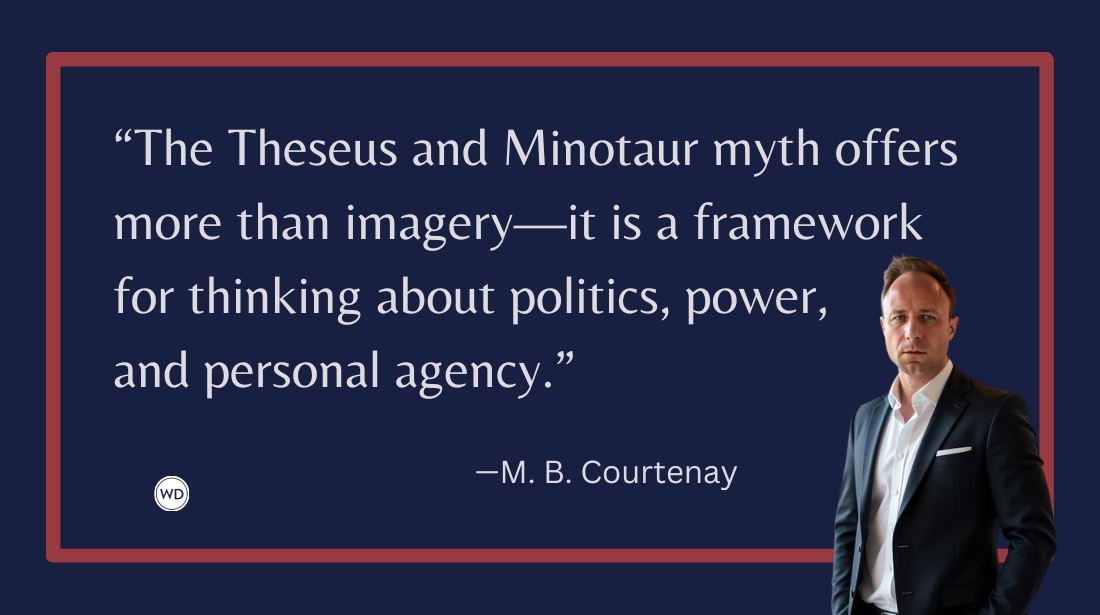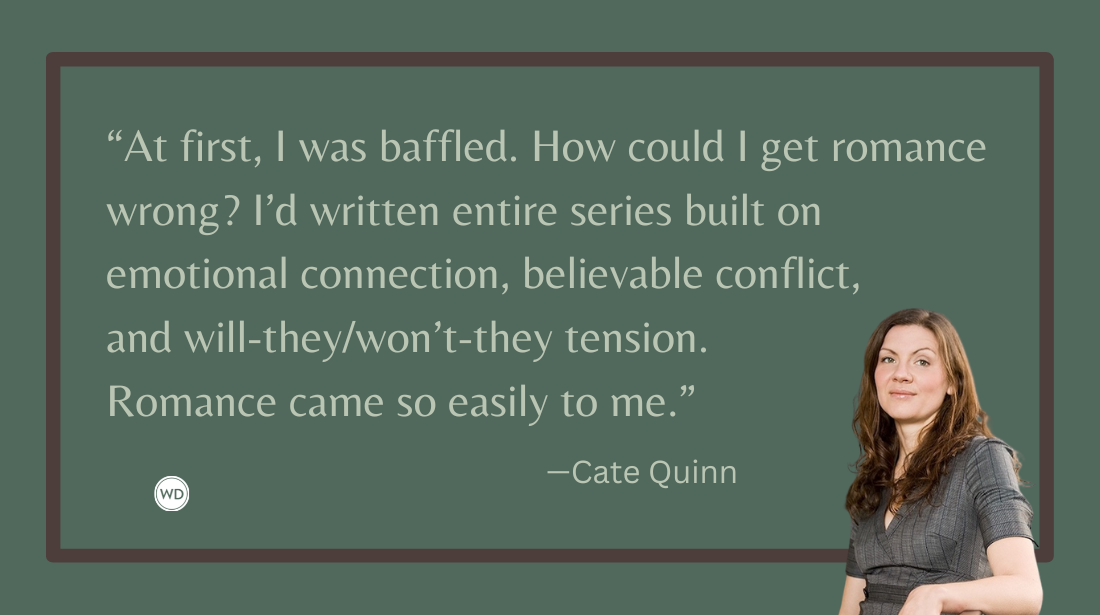6 Secrets of Writing a Novel Without an Outline
Author (and pantser) Steven James shares six secrets of writing a novel without an outline. If you’ve ever wanted to throw away your outline and uncover a story word by word, here’s how to get started.
I have a confession to make.
When I was in school and a teacher would assign us to write an outline for a story, I’d finish the story first, then go back and write the outline so I’d have something to turn in. Even as a teenager I thought outlining was counterintuitive to the writing process.
But outlining is still taught as if it’s “the right way” to shape a story. I have a master’s degree in storytelling and I can’t think of a single time I’ve received instruction on writing a story without an outline. You’ll hear the importance of plotting out your story trumpeted at writing conferences nationwide, and if you don’t follow those formulas you’ll be labeled an SOPer (that is, a “seat-of-the-pantser,” or sometimes just a “pantser”—and no, I’m not making this up).
Over the last decade, as I’ve taught writing seminars across North America I’ve found that when I advise people to stop outlining and instead develop a more personalized, organic writing process, I get strange looks as if that goes against some sort of rule.
Well, if that’s the case, I invite you to the rebellion. If you’ve ever wanted to throw away your outline and uncover a story word by word, here’s how to get started.
1. Re-evaluate what you’ve heard about story.
Lots of outliners teach that a story should have three acts.
That’s simply not true.
Regardless of how many acts or scenes your story has, this is what it needs to have in order to be effective and complete: an orientation to the world of the characters, an origination of conflict, an escalation of tension, rising stakes, a moment at which everything seems lost, a climactic encounter, a satisfying conclusion, and a transformation of a character or situation (usually both).
If you want to divide those into three acts, have at it.
Forget, too, what you’ve learned about stories building through “rising action,” as many popular plot graphs would have you believe. Stories build through escalating tension. Simply making more exciting things happen doesn’t ensure that readers will remain interested as the story progresses. Tightening the tension does.
That means it’s equally unhelpful to think of your story as “character-driven” or “plot-driven.” Describing a character or simply telling us what’s happening will not drive your story forward. Tension comes from unmet desire. What readers need to know, then, is what your character wants but cannot get, and what he is doing to try to get it.
Popular outline and structure “formulas” are filled with misconceptions about what makes a story work. Rather than straightjacketing your story by forcing it into three acts, or trying to map it out as “character-driven” or “plot-driven,” take the organic approach by first simply asking yourself what is truly at the heart of your story.
Remember: What your story really needs is an orientation, a crisis or calling that disrupts normal life, relentless escalation of tension, and a satisfying climax. Along the way, you’ll need to make sure readers are compelled to empathize and connect with the main character(s), feel enough emotion to stay intrigued by the story, and gain enough insight to see the world with new eyes when they’re done.
Focus all of your attention at the heart of your story, keeping these essential elements and goals in mind, and you’ll begin to intuitively understand what needs to happen to drive the story forward.
When you’re informed about what makes a story work, you’re never writing from the seat of your pants. By letting your story develop organically, you’re delving deeper and deeper into the essence of what storytelling is all about.
2. Let narrative forces rather than formulas drive your story forward.
Imagine a giant ball of clay being held by a group of people. As one person presses against the clay, the clay’s shape changes.
The clay is your story; the people surrounding it represent the narrative forces pressing in upon it to shape it. For example:
Escalation: The tension must continue to escalate scene by scene until it reaches a climax after which nothing is ever the same again.
Believability: The characters in your story need to act in contextually believable ways. All the time.
Causality: Everything that happens must be caused by the thing that precedes it.
Scenes and setbacks: If nothing is altered you do not have a scene. If your characters solve something without a setback you do not have a story.
Inevitability and surprise: Each scene should end in a way that’s unexpected and yet satisfying to readers. The end of every scene must be not only logical but, in retrospect, the only possible conclusion to that scene.
Continuity: Continuity develops through pace (the speed at which things are happening) and narrative energy (the momentum carrying them along).
Genre conventions: Readers enter a story with expectations based on their understanding of its genre. You need to be familiar enough with genre conventions to meet or exceed those expectations without resorting to cliches.
All of these elements, plus voice, setting, mood and more, press against the story in a continual give-and-take relationship, affecting one another and forming the shape of the tale. As you write, constantly look at the pressure each of these concepts places on the story:
OK, I need to escalate this chase scene—I had a foot chase before, so I can’t do that again. Maybe a helicopter chase? But will that be believable? Well, I’ll need to foreshadow that someone knows how to fly the helicopter and make it inevitable that they end up at the helicopter landing pad at this moment of the story. But does that fit in with the pace right here? Can I pull this off without relying on narrative gimmicks or coincidences?
Listen to the story, using questions like those in the sidebar below. It will reveal itself to you as you lean into it.
3. Follow rabbit trails.
Forget all that rubbish you’ve heard about staying on track and not following rabbit trails. Of course you should follow them. It’s inherent to the creative process. Who knows? What you at first thought was just a rabbit trail leading nowhere in particular might take you to a breathtaking overlook that eclipses everything you previously had in mind.
Without serendipitous discoveries, your story runs the risk of feeling artificial and prepackaged. Give yourself the freedom to explore the terrain of your story. Wander daily through your idea field and unreservedly embrace the adventure.
*****
If you want to learn how to write a story, but aren’t quite ready yet to hunker down and write 10,000 words or so a week, this is the course for you. Build Your Novel Scene by Scene will offer you the impetus, the guidance, the support, and the deadline you need to finally stop talking, start writing, and, ultimately, complete that novel you always said you wanted to write.
*****
4. Write from the center of the paradox.
Think of your story as a contract with your readers, an agreement that you will entertain, surprise and satisfy them. Every choice that your characters make has an implication; every promise you make needs to be fulfilled. The more promises you break, the less readers will trust you. And often, when readers put a book down, that’s exactly why—they’ve stopped trusting that you’re going to fulfill the promises you’ve made.
Here are some common ways that outliners may break their contracts with readers:
Foreshadow something and fail to make it significant.
Introduce a character, make readers care about her, and then drop her from the story.
Develop conflict and then fail to resolve it in a satisfactory way.
Have characters act in unbelievable ways.
Organic writers are well-equipped to make big promises and then keep them. We’re never directionless, because we can always work on scenes that fulfill promises we’ve made earlier, or go back and foreshadow the fulfillment of promises we think of as the story takes shape.
In storytelling, what will happen informs what is happening, and what is happening informs what did. You cannot know where a story needs to go until you know where it’s been, but you cannot know where it needs to have been until you know where it’s going.
It’s a paradox.
And that’s part of the fun.
I find it helpful to discard the idea of a first draft and think of writing the entire story as an integrated whole. As you pay attention to the choices your characters make and let the implications of their choices play out on the page, you’ll find yourself writing your story forward and backward at the same time, weaving in narrative elements to create your work intuitively rather than mechanically.
5. Trust the fluidity of the process.
I love Stephen King’s analogy in his book On Writing comparing stories to fossils that we, the storytellers, are uncovering. To plot out a story is to decide beforehand what kind of dinosaur it is. King writes, “Plot is, I think, the good writer’s last resort, and the dullard’s first choice.”
His analogy helps me to stop thinking of a story as something I create as much as it is something I uncover by asking the right questions.
When people outline, they’ll inevitably come up with ideas for scenes that seem important to the plot, but in the resulting manuscript, the transitions between these scenes (in terms of the character’s motivation to move to another place or take a specific action) are often weak. You can usually tell that an author outlined her story when you find yourself thinking, But why wouldn’t the character just …?
As you learn to feel out the story by constantly exploring what would naturally happen next, you’ll find your characters acting in more believable and honest ways.
Here’s the biggest problem with writing an outline: You’ll be tempted to use it. You’ll get to a certain place and stop digging, even though there might be a lot more of that dinosaur left to uncover.
6. Re-evaluate continuously.
So, in practice, how does this work? When you sit down at the keyboard each day, what do you do if you don’t have an outline to work from?
Reorient yourself to the context. Print out the previous 50 or 100 pages (once a week I find it helpful to do the whole novel) and read it through the eyes of a reader, not an editor. Remember, readers aren’t looking for what’s wrong with the story; they’re looking for what’s right with it. Continually ask yourself, What are readers wondering about, hoping for and expecting at this moment in the story? Then give it to them.
Draft the scene that would naturally come next. The length and breadth of the scene needs to be shaped by the narrative forces I mentioned earlier.
Go back and rework earlier scenes as needed. What you write organically will often have implications on the story you’ve already written.
Keep track of unanswered questions and unresolved problems. Review them before each read- through of your manuscript.
Come up with a system to organize your ideas as they develop. In addition to files of character descriptions, phrases, clues and so on, I have four word processing files I use to organize my thoughts: 1) Plot Questions, 2) Reminders, 3) Discarded Ideas and 4) Notes.
If you find yourself at a loss for what to write next, come up with a way to make things worse, let the characters respond naturally to what’s happening, write a scene that fulfills a promise you made earlier in the book, or work on a scene you know readers will expect based on your genre and the story you’ve told so far. When you understand the principles of good storytelling, you always have a place to start.
Move into and out of the story, big picture, small picture, focusing one day on the forest and the next day on the trees. Follow these ideas, and stories will unfold before you.
Leave outlining to English teachers. Let the rebellion begin.
Steven James is the critically acclaimed author of thirteen novels. He serves as a contributing editor to Writer’s Digest magazine, hosts the biweekly podcast The Story Blender, and has a master’s degree in storytelling. Publishers Weekly calls him “[a] master storyteller at the peak of his game.” Steven’s groundbreaking book Story Trumps Structure: How to Write Unforgettable Fiction by Breaking the Rules won a Storytelling World award as one of the best resources for storytellers in 2015. When he’s not working on his next novel, Steven teaches Novel Writing Intensive retreats across the country with New York Times Bestselling author Robert Dugoni.









